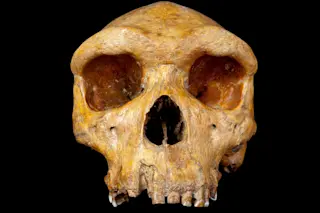The town of Kabwe sits about 70 miles north of Zambia’s capital, Lusaka, as the crow flies. Just over 200,000 people live in this major transportation crossroads. Like most of this south-central African nation, Kabwe is perched on a high and vast plateau, a land of red soils dotted with shrubby legumes and canopies of small, spindly miombo trees.
Kabwe’s story is defined in part by a mine that opened in the early 1900s after rich deposits of lead and zinc were discovered on the edge of the town. Kabwe—then called Broken Hill—became a major mining center, producing profits for British interests and, later, important metals for the Allies in both world wars. At that time, Zambia was known as Northern Rhodesia, after British mining magnate Cecil Rhodes, whose name has come to symbolize the worst evils of his nation’s colonialism.
The mine shut down in 1994 after its deeper ...














